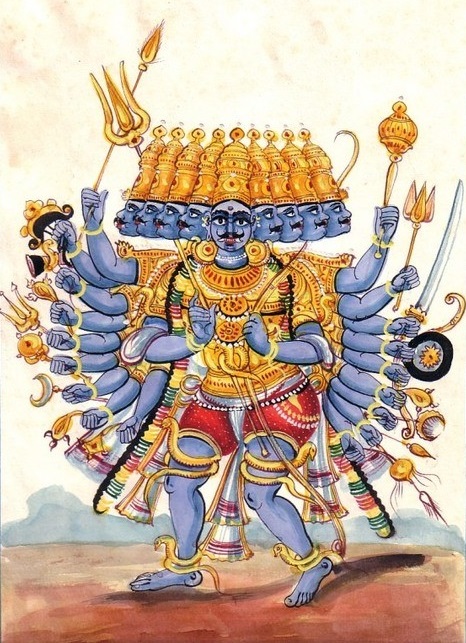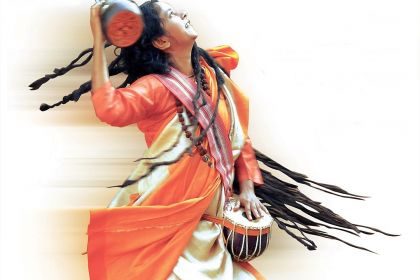Ravanahatha
The Ravanahatha: from Hela civilization to the primary instrument of Rajasthani folk

Sunset in Pushkar, Rajasthan by Dr. Glazunov
The ravanahatha (also known as ravanhatta or rawanhattha) is an ancient stringed musical instrument that is suggested to be the precursor to the violin.
It is believed the ravanahatha originated in the Hela civilization of Sri Lanka during the King Ravana reign around 2500 BCE. The instrument was the King's instrument of choice, hence the name, which literally translates as Ravana’s hand.
King Ravana is often mentioned in the oldest Sanskrit epic the Ramayana written around the 5th century BCE. Therein, his name is explained in a colorful myth where the demon-king Ravana challenges the great god Shiva (also known as Nandisa and Nandisvara) and loses.

Ravana is usually depicted multi-headed and multi-armed, carrying all manner of lethal weapons. He appears in the decorative sculpture of Hindu temples, most often in battle scenes with Rama—with whom he'd had an eternal feud—or riding his winged chariot.
For Rama, many attempts to defeat Ravana ended in vain, until the son of the wind Hanuman magically transported Rama and his forces to Lanka for the final battle with Ravana.
Rama's arrow went right through the demon-king, traveled over the seas and came straight back into the quiver. Ravana was dead and the world rid of a terrible lawless force. Rama headed back home to begin a golden era of government.
Ravana (on the left) and Hanuman:

After that great battle, Hanuman had carried the ravanahatha as a winning trophy to India, where the instrument is still enlivening the cultural environment of Rajasthan and Gujarat with its tunes.
The modern instrument is made up of a bowl-shaped resonator fashioned from a cut coconut shell that is covered with goat hide.
The body is the Dandi, a long bamboo stem punctured at regular interval to fix the knobs which provide the fine-tuning of the ravanahatha. The important part of the instrument is the Bejara – smoothed hair from horsetail, giving the ravanahatha its unique sound.
The bow of the instrument often has a bells section which helps the performer to provide rhythm into the melodic pattern.
Unlike the sitar or sarod, which represent Indian classical harmony at the international level, the ravanahatha is a folk instrument associated mainly with the Thar Desert and its nomadic culture.
You will not hear any classic Indian ragas performed on the ravanahatha, but in every corner of this magnificent desert, you will meet wanderers who skillfully play dance melodies or brooding meditative tunes.
Watch Rajasthani musician playing the ravanahatha at Jaisalmer Fort:
Some sources claim that around the 8th century CE, Arab traders brought the ravanahatha from India to the Near East, where it provided the basic model for the Arab rebab and other early ancestors of the violin family.
Rebab:





Interesting read. Thank you!